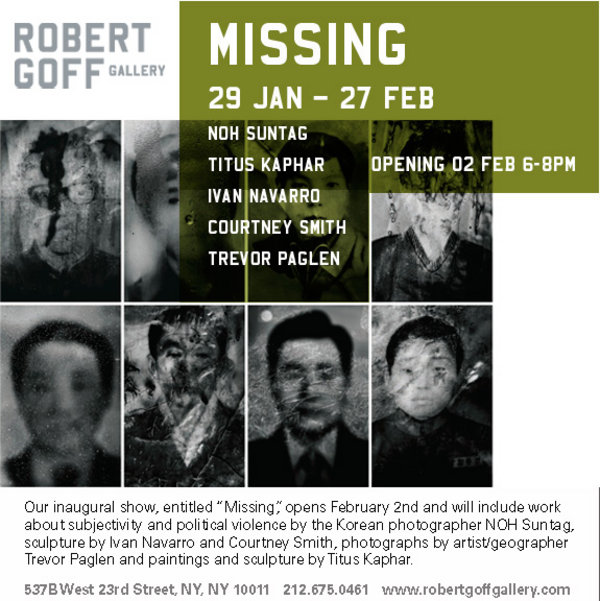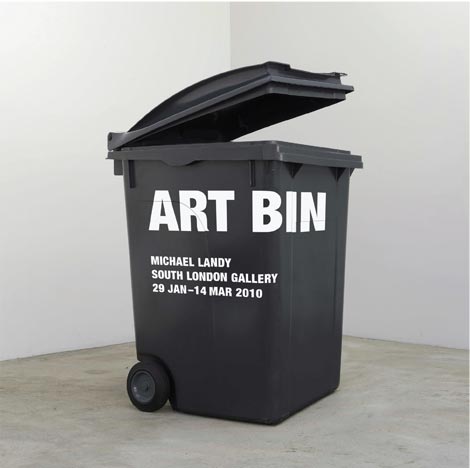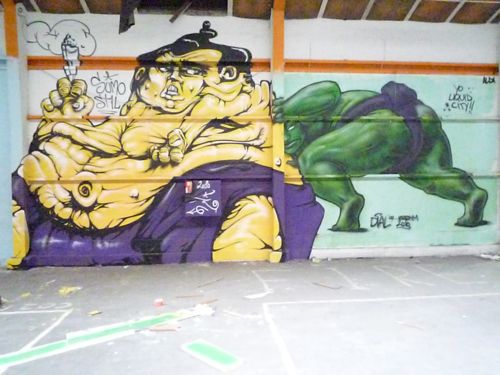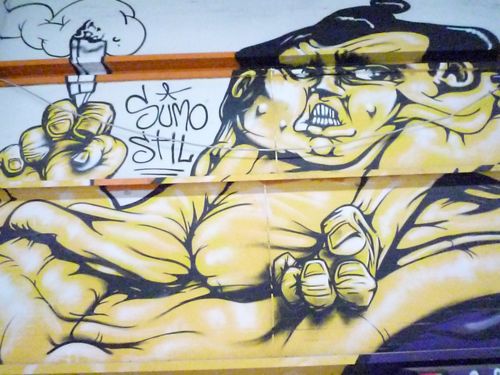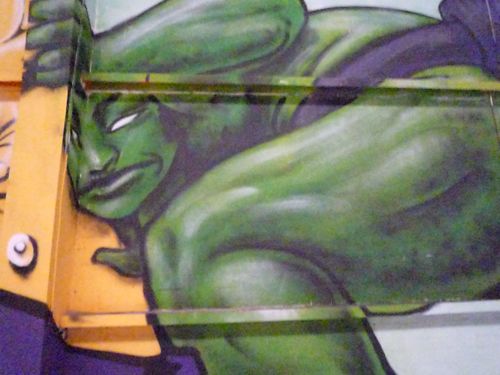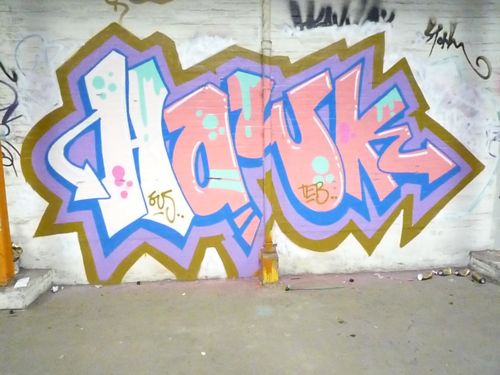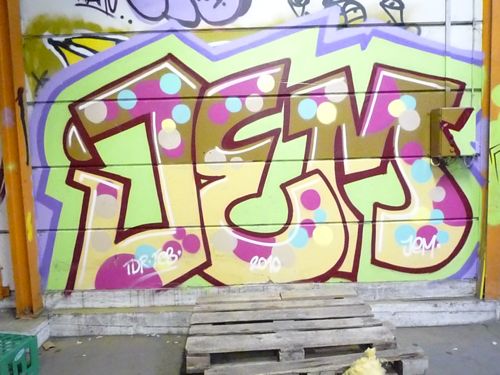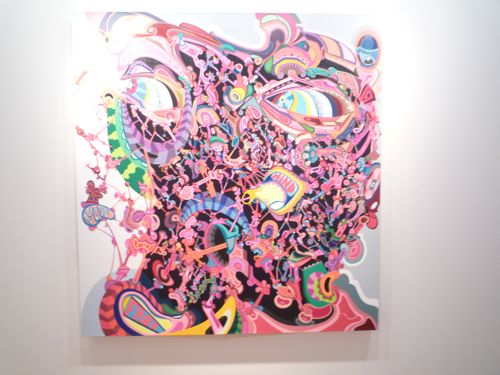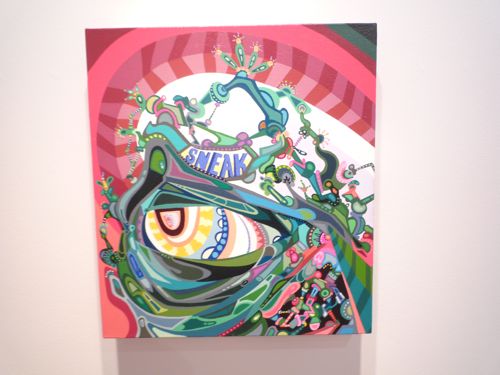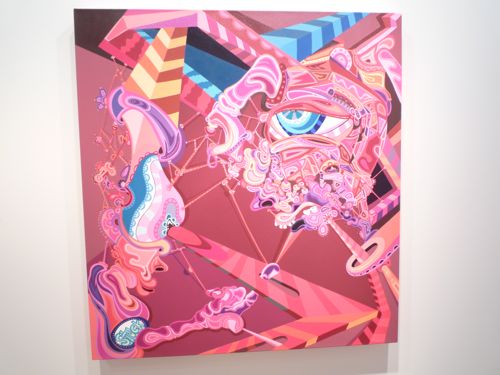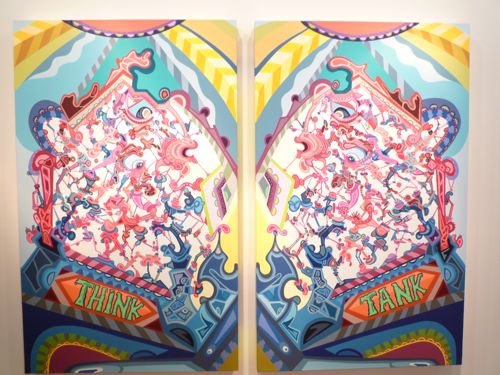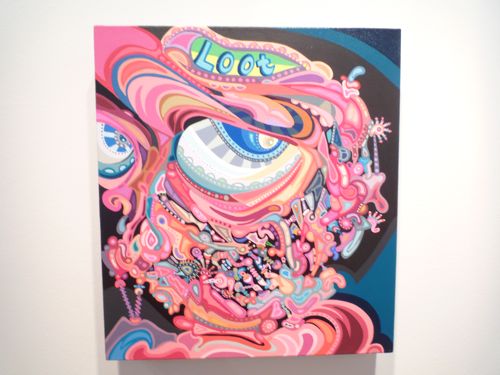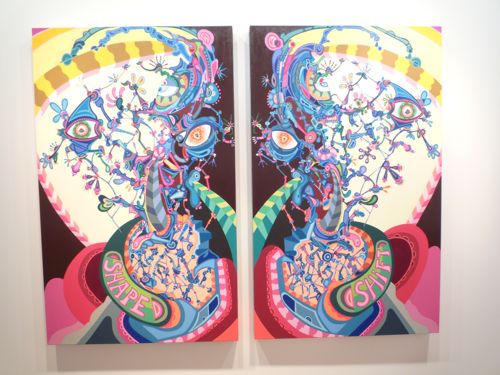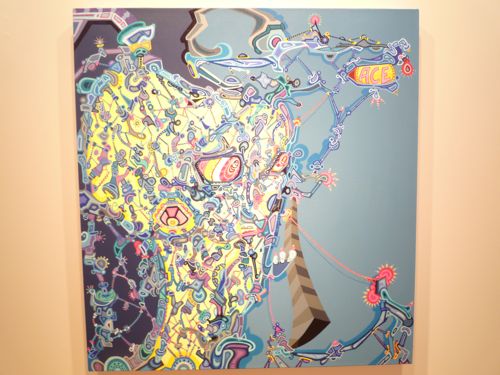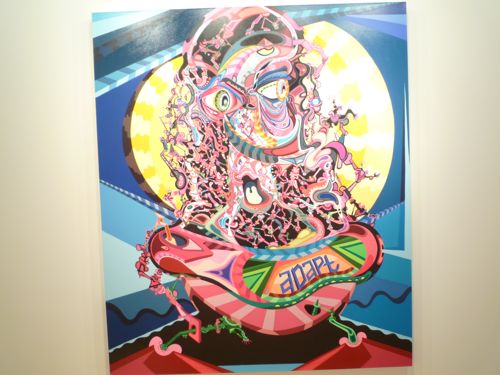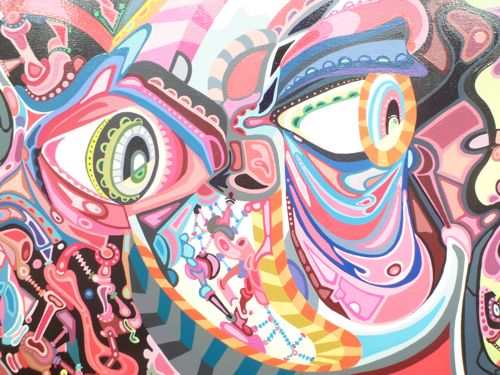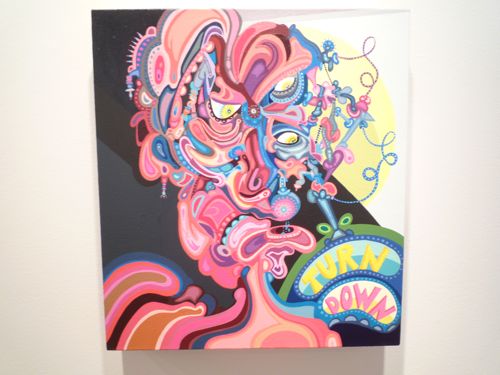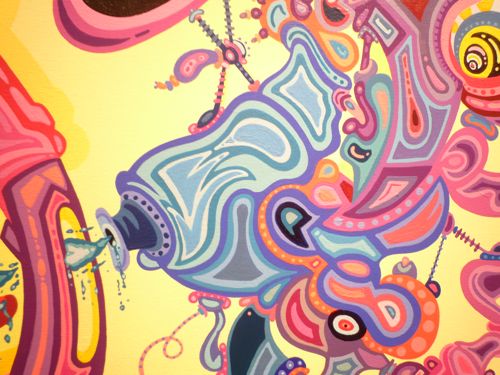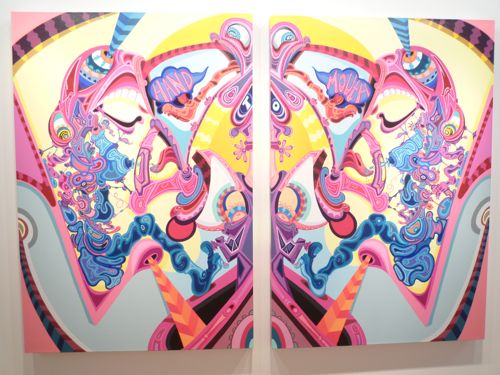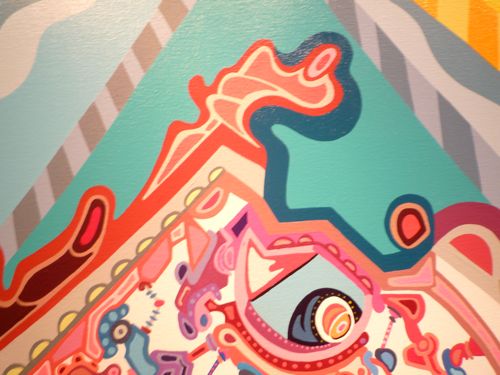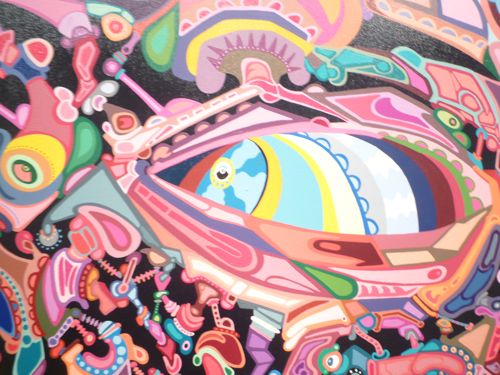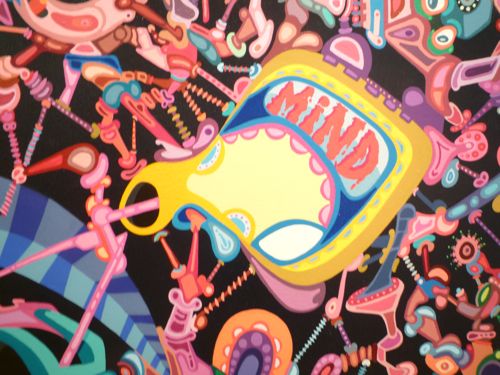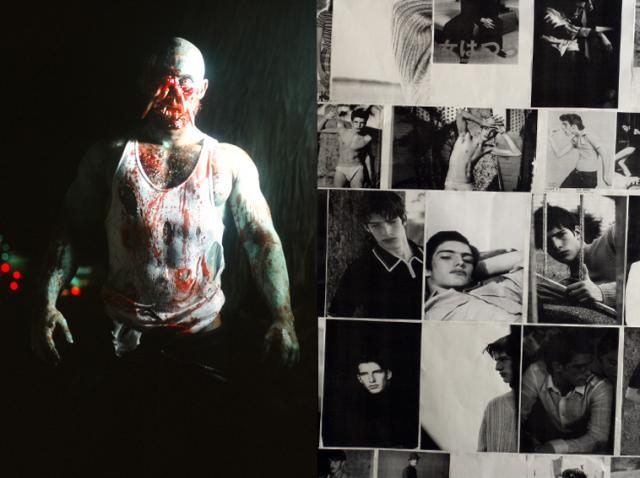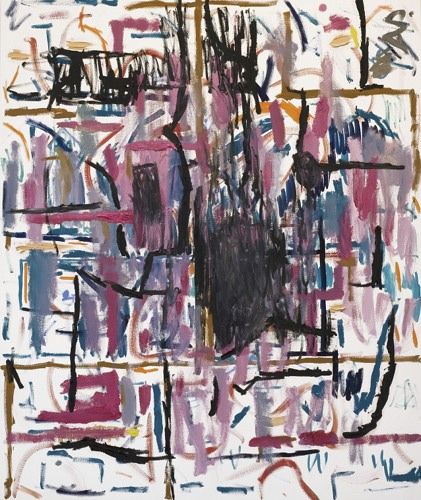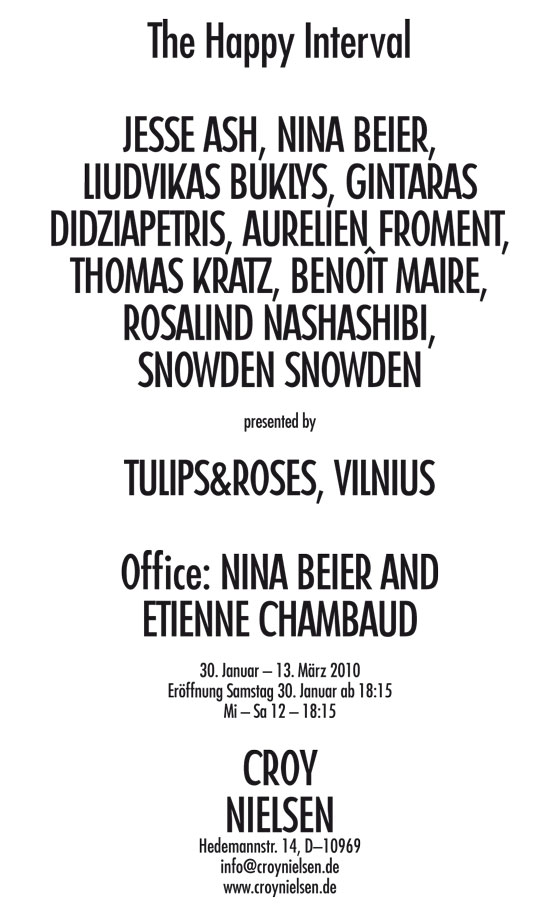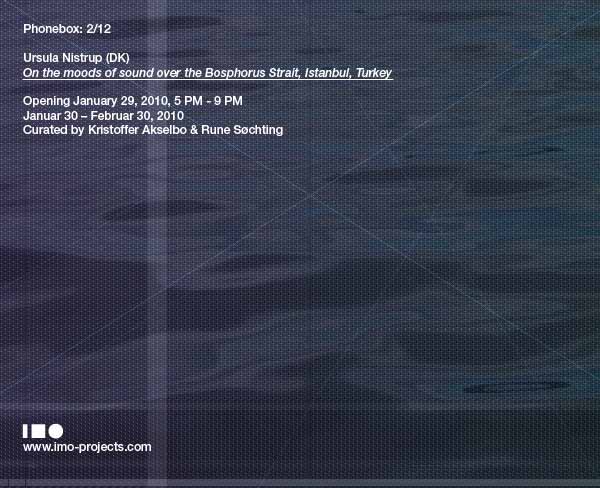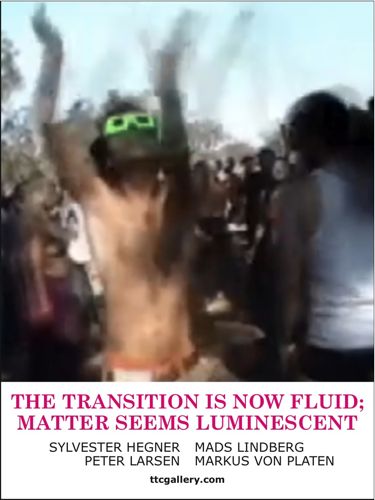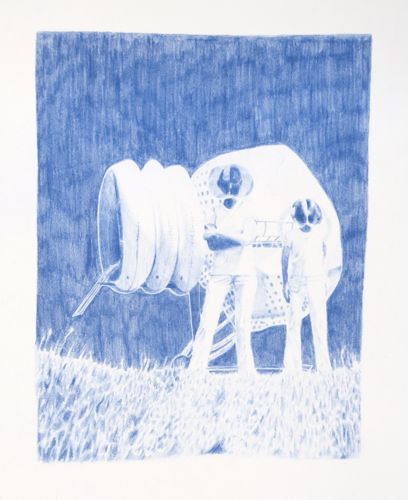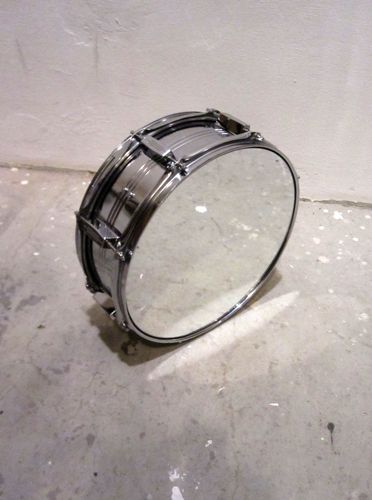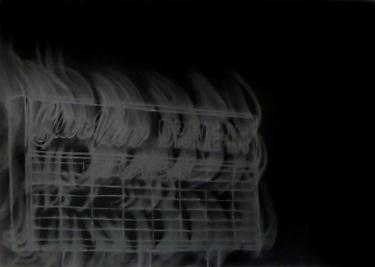
In the exhibition “Midnight Matinee,” Gary Simmons uses images of drive-in theater marquees and infamous houses from vintage horror films to reflect on ghosts and abandoned pasts. Simmons has long referenced film, architecture and American popular culture in works that address personal and collective memories of race and class.
The films Amityville Horror, Burnt Offerings, Psycho and The Texas Chainsaw Massacre all have houses that figure prominently, often actively, in the plot. No less haunted are the forsaken drive-in theatres, their elaborate signs and marquees totems to their lost vitality. Combined, the images of architecture and the cinema naturally lend themselves to the movement inherent in Simmons’ drawings and paintings. “Split Personality” is a large wall drawing (scaled to the proportions of a movie screen) that uses an image of the notorious Psycho house split horizontally and inverted as if flickering between frames. The multi-panel drawings create the illusion of movement in their vertical filmstrip format with images repositioned as in stop-motion animation.
Simmons’ distinctive “erasure” technique has been central to his work since the early 1990’s. In their earliest incarnations, Simmons composed compositions in white chalk on readymade chalkboards or directly onto slate-painted walls that he partially expunges and erases by smudging the images with his hands. In recent years, Simmons has adapted the process to canvas using pigment, oil paint and cold wax. Using a black on black palette for the first time, Simmons’ new works amplify the refinement of his technique with subtly textured backgrounds and images drawn and smeared in lush oil paint.
Gary Simmons has been included in exhibitions at the Museum of Modern Art, New York; the Bohen Foundation, New York; the Whitney, New York; the Studio Museum of Harlem, New York; the Museum of Contemporary Art, Chicago; the Hirshhorn Museum, Washington D.C.; the Museum of Contemporary Art, Los Angeles; the St. Louis Art Museum and the Kunsthaus Zürich. He has had work recently commissioned for both the New York Presbyterian Hospital and the Dallas Cowboys stadium. His work is represented in the collections of the Museum of Modern Art, New York; the Rubell Family Collection, Miami; the Museum of Contemporary Art, Chicago; the San Francisco Museum of Modern Art; and the Whitney, New York.
